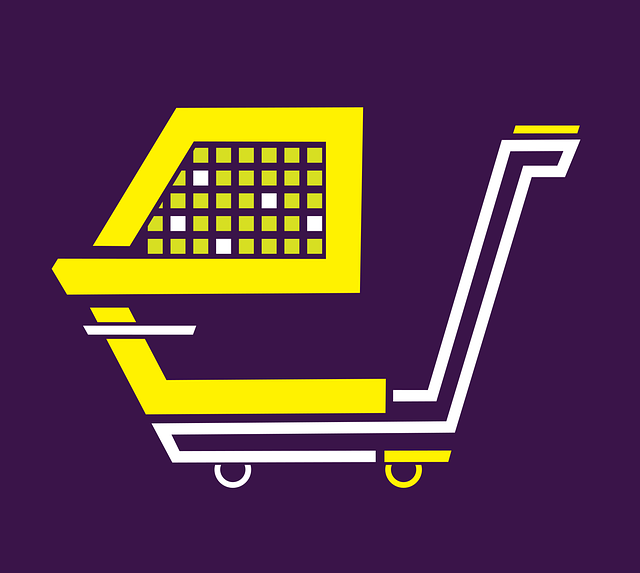In today's digital era, e-commerce web solutions are vital for businesses aiming to excel in online retail. These solutions offer a comprehensive suite of services to create and manage efficient stores. Key aspects include global audience reach, personalized experiences, data analytics, secure payment gateways, mobile optimization, and SEO. Ecommerce store design focuses on visual aesthetics, easy navigation, robust technical features, and simplicity to engage users and encourage conversions. Advanced technologies like AI, machine learning, AR, and VR enhance personalization, search functionality, inventory management, and customer support. Success is measured through KPIs such as conversion rate, average order value, and customer lifetime value.
In today’s digital landscape, e-commerce web solutions are transforming how businesses operate and connect with customers. Understanding these solutions and their impact is crucial for navigating the competitive online market. This article delves into key aspects of e-commerce success, focusing on store design, essential components, user experience optimization, advanced technology integration, and measuring performance through KPIs. By exploring these strategies, businesses can enhance customer engagement and drive growth in the digital realm, leveraging the power of an optimized ecommerce store design.
Understanding E-commerce Web Solutions and Their Impact

In today’s digital era, e-commerce web solutions have become a cornerstone for businesses looking to thrive in the online marketplace. These solutions encompass a range of services designed to create, optimize, and manage an effective ecommerce store design. From user-friendly interfaces that enhance navigation and improve customer experiences, to robust back-end systems that streamline inventory management and sales processing, these web solutions play a pivotal role in driving online retail success.
Ecommerce web solutions significantly impact businesses by enabling them to reach a global audience, offer personalized shopping experiences, and leverage data analytics for informed decision-making. A well-designed ecommerce store not only boosts sales but also fosters customer loyalty and engagement. By integrating advanced features like secure payment gateways, mobile responsiveness, and search engine optimization (SEO), these solutions help online retailers stay competitive in a dynamic market, ultimately contributing to their growth and sustainability.
The Role of E-commerce Store Design in Customer Engagement

The visual aesthetics and user experience of an ecommerce store play a pivotal role in engaging and retaining customers. Ecommerce store design is more than just a pretty face; it’s a strategic tool that influences customer behavior, product perception, and ultimately, conversion rates. A well-designed online storefront should be visually appealing, easy to navigate, and optimized for various devices, ensuring a seamless shopping journey from start to finish.
By incorporating intuitive layouts, high-quality visuals, and clear calls-to-action, ecommerce store design fosters trust and encourages users to explore products further. It’s about creating an environment that resonates with the target audience, communicates brand identity, and facilitates quick and efficient transactions. Ultimately, a compelling ecommerce store design transforms casual visitors into engaged shoppers, driving sales growth and fostering long-term customer relationships.
Key Components of a Successful E-commerce Website

A successful ecommerce website is more than just a digital storefront; it’s a seamless blend of attractive design, user-friendly functionality, and robust technical capabilities. At the heart of this lies ecommerce store design that prioritizes a clean, intuitive layout, high-quality visuals, and easy navigation. A well-designed site encourages users to browse, engage, and ultimately convert, enhancing customer satisfaction and fostering brand loyalty.
Central to this are responsive designs that adapt beautifully across devices, from desktops to smartphones, ensuring accessibility and convenience for all shoppers. Secure payment gateways, seamless checkout processes, and integrated shipping options further streamline the buying journey, instilling confidence in customers. Effective product descriptions, high-resolution images, and customer reviews also play pivotal roles in guiding purchases and building trust.
Strategies for Optimizing User Experience (UX) in E-commerce

Creating an engaging and user-friendly experience is paramount for the success of any e-commerce store. A well-designed ecommerce store should intuitively guide users through the purchasing journey, from product discovery to checkout. Optimizing navigation, implementing effective visual hierarchies, and ensuring fast page load times are essential strategies. Simplifying the search function and providing high-quality, detailed product images and descriptions further enhances UX.
Additionally, leveraging user reviews and social proof can significantly influence purchasing decisions. Integrating interactive elements like live chat or personalized recommendations based on browsing history personalizes the experience, fostering a sense of connection with the brand. A seamless checkout process, including multiple payment options and secure transactions, is crucial to minimizing cart abandonment and maximizing conversions.
Integrating Advanced Technologies into Your E-commerce Platform

In today’s digital era, integrating advanced technologies into your e-commerce store design is no longer an option but a necessity. Features like artificial intelligence (AI) and machine learning can enhance customer experience by offering personalized product recommendations, improving search functionality, and streamlining inventory management. AI chatbots provide 24/7 customer support, while predictive analytics helps in forecasting demand and optimizing pricing strategies.
Moreover, incorporating augmented reality (AR) and virtual reality (VR) technologies allows customers to visualize products in a more immersive way, boosting sales and reducing return rates. These innovations not only make your e-commerce platform more competitive but also contribute to creating a seamless and engaging shopping experience for your customers.
Measuring Success: Key Performance Indicators (KPIs) for E-commerce Websites

Measuring success is an integral part of any online business, and e-commerce websites are no exception. Key Performance Indicators (KPIs) offer valuable insights into the effectiveness of your online store design and overall digital strategy. These metrics allow you to identify what’s working, pinpoint areas for improvement, and make data-driven decisions to enhance your e-commerce presence.
Some essential KPIs for e-commerce stores include conversion rate, average order value (AOV), customer lifetime value (LTV), bounce rate, and return visitors. For instance, a high conversion rate indicates that your store design successfully guides users through the sales funnel, while a low bounce rate suggests that customers are engaging with your product pages. By analyzing these KPIs, you can optimize your website’s layout, content, and functionality to create an immersive shopping experience, ultimately driving more sales and fostering customer loyalty.
